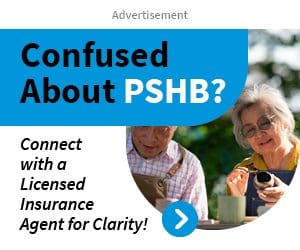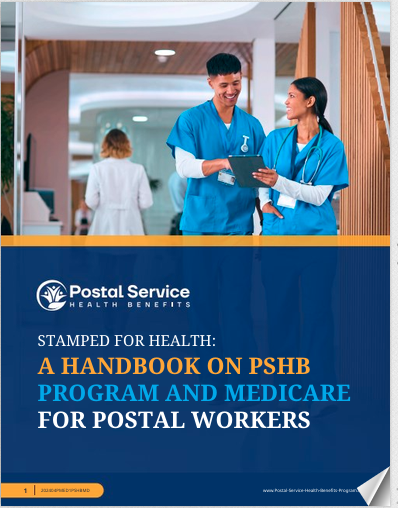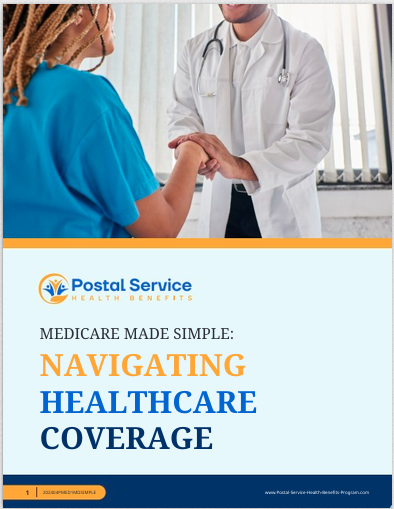Key Takeaways:
- The Postal Service Health Benefits (PSHB) program introduces significant changes that differ from the Federal Employees Health Benefits (FEHB) program, affecting coverage options and enrollment requirements for USPS workers.
- Understanding how PSHB compares to the FEHB plan is crucial for making informed decisions regarding your health coverage.
USPS Workers, Here’s How PSHB Compares to Your Old FEHB Plan
The U.S. Postal Service (USPS) workforce has long relied on the Federal Employees Health Benefits (FEHB) program for their health coverage. However, significant changes have been implemented with the introduction of the Postal Service Health Benefits (PSHB) program. Understanding how PSHB compares to the traditional FEHB plan is essential for USPS workers who need to make informed decisions about their healthcare coverage.
What Is the Postal Service Health Benefits (PSHB) Program?
The Postal Service Health Benefits (PSHB) program was established by the Postal Service Reform Act of 2022. This act mandated that USPS create a separate health benefits program exclusively for postal workers and retirees. PSHB will officially replace the FEHB program for USPS employees starting January 1, 2025.
While the FEHB program remains available to federal employees, USPS workers will transition to the PSHB program, which is tailored specifically to the needs and circumstances of postal employees. This new program introduces several important changes and considerations that USPS workers must understand.
Key Differences Between PSHB and FEHB Plans
1. Coverage Options
One of the most notable differences between the PSHB and FEHB programs is the scope of coverage options. Under FEHB, USPS workers had access to a wide range of plans available to all federal employees. These plans included a variety of HMOs, PPOs, and fee-for-service plans, offering diverse choices to meet individual healthcare needs.
With PSHB, however, the choices are more focused. The PSHB program is designed specifically for USPS employees and retirees, meaning that the available plans will be tailored to the unique healthcare needs and usage patterns of postal workers. While this specialization can offer more relevant coverage options, it also means that USPS workers may have fewer plans to choose from compared to the FEHB program.
2. Medicare Integration
Another critical difference between PSHB and FEHB is the integration with Medicare. For postal retirees, this change is significant. Under the FEHB program, Medicare integration was optional, giving retirees the flexibility to choose whether to enroll in Medicare Part B. This allowed some retirees to avoid paying additional premiums if they felt that FEHB coverage was sufficient.
However, under the PSHB program, Medicare Part B enrollment will become mandatory for USPS retirees who are 65 or older. Starting in 2025, if you are a USPS retiree eligible for Medicare, you must enroll in Medicare Part B to maintain your PSHB coverage. This mandatory integration is intended to reduce overall healthcare costs for the Postal Service by leveraging Medicare’s coverage. While this may benefit some retirees by potentially lowering out-of-pocket costs, others may find the additional premium burdensome.
3. Premiums and Cost Sharing
While specific details about premiums and cost-sharing under the PSHB program are still being finalized, there are expectations that the PSHB will offer competitive pricing compared to the FEHB program. The PSHB is designed to be self-sustaining, with premiums set to cover the costs of providing health benefits to USPS workers and retirees.
It’s important to note that under the FEHB program, premiums were determined based on a broader pool of federal employees, which could sometimes result in more competitive rates due to the larger risk pool. With PSHB, the risk pool is limited to USPS workers and retirees, which could influence premium rates. However, the exact impact on premiums and cost-sharing won’t be clear until the program is fully implemented.
4. Enrollment Process
The enrollment process is another area where PSHB and FEHB differ. Under the FEHB program, USPS workers could enroll or make changes to their health coverage during the annual Open Season or when experiencing a qualifying life event, such as marriage or the birth of a child.
The PSHB program will follow a similar enrollment schedule but with some differences. USPS workers must actively enroll in a PSHB plan during the Open Season in 2024 to have coverage starting in 2025. Those who fail to enroll may face gaps in coverage or default into a plan that may not meet their needs. Additionally, USPS retirees will need to ensure they are enrolled in Medicare Part B as required to maintain their PSHB coverage.
5. Provider Networks
The PSHB program may also bring changes to the provider networks available to USPS workers. FEHB plans typically offered broad networks that included a wide range of healthcare providers across the country. While the exact details of the PSHB provider networks are still being developed, it’s possible that these networks could be more specialized or regionally focused, reflecting the specific needs of USPS workers.
This change means that USPS employees and retirees should carefully review the provider networks associated with PSHB plans to ensure that their preferred doctors and hospitals are included. If your current providers are not in the network, you may need to switch to new providers or choose a different plan within the PSHB program that includes your current healthcare providers.
6. Prescription Drug Coverage
Prescription drug coverage is a crucial aspect of any health benefits program, and both the FEHB and PSHB programs provide this coverage. However, there may be differences in the formularies (the list of covered drugs) and cost-sharing structures between the two programs.
Under FEHB, each plan had its own formulary and cost-sharing requirements, which could vary widely. The PSHB program is expected to streamline prescription drug coverage, potentially offering more consistent formularies across plans. However, USPS workers should still review the details of prescription drug coverage under PSHB to ensure that their medications are covered and to understand any associated costs.
How PSHB Affects USPS Retirees
For USPS retirees, the transition to PSHB brings specific considerations. As mentioned earlier, mandatory Medicare Part B enrollment is a significant change that will affect all USPS retirees aged 65 and older starting in 2025. This requirement is intended to integrate Medicare with PSHB coverage, potentially lowering overall costs for retirees by reducing their out-of-pocket expenses.
However, some retirees may face challenges with the mandatory Medicare Part B enrollment, particularly if they have been relying solely on FEHB coverage without Medicare. The additional premiums associated with Medicare Part B could be a financial burden for some retirees, although these costs may be offset by lower out-of-pocket expenses under PSHB.
Retirees should also pay close attention to the enrollment process for PSHB. Unlike the FEHB program, where retirees could often keep their existing coverage into retirement, the PSHB program will require active enrollment during the Open Season in 2024. Failure to enroll could result in a loss of coverage or being defaulted into a plan that may not meet the retiree’s needs.
Preparing for the Transition to PSHB
As the transition to PSHB approaches, it’s essential for USPS workers and retirees to take proactive steps to ensure a smooth transition. Here are some key actions to consider:
- Stay Informed: Keep up to date with the latest information about PSHB, including plan options, premiums, and coverage details. The USPS will likely provide resources and communications to help employees and retirees navigate the transition.
- Review Your Current Coverage: Take the time to review your current FEHB coverage and identify any gaps or concerns. Understanding your current coverage will help you make informed decisions when choosing a PSHB plan.
- Evaluate Medicare Enrollment: If you are a USPS retiree approaching age 65 or already eligible for Medicare, consider the implications of mandatory Medicare Part B enrollment. Evaluate your healthcare needs and budget to determine how Medicare and PSHB will work together to meet your needs.
- Participate in Open Season: Be sure to actively participate in the Open Season in 2024. This is your opportunity to choose a PSHB plan that aligns with your healthcare needs and preferences. Don’t wait until the last minute to make your decision.
- Consult with a Licensed Insurance Agent: If you have questions or need assistance navigating the transition, consider consulting with a licensed insurance agent who can provide personalized guidance based on your specific circumstances.
Moving Forward with Confidence
The transition from FEHB to PSHB represents a significant change for USPS workers and retirees. While the PSHB program is designed to meet the unique needs of postal employees, it also introduces new considerations, particularly regarding Medicare integration and enrollment processes. By staying informed and taking proactive steps, USPS workers can navigate this transition with confidence and ensure they have the coverage that best meets their needs.
Contact Information:
Email: [email protected]
Phone: 4635555678







